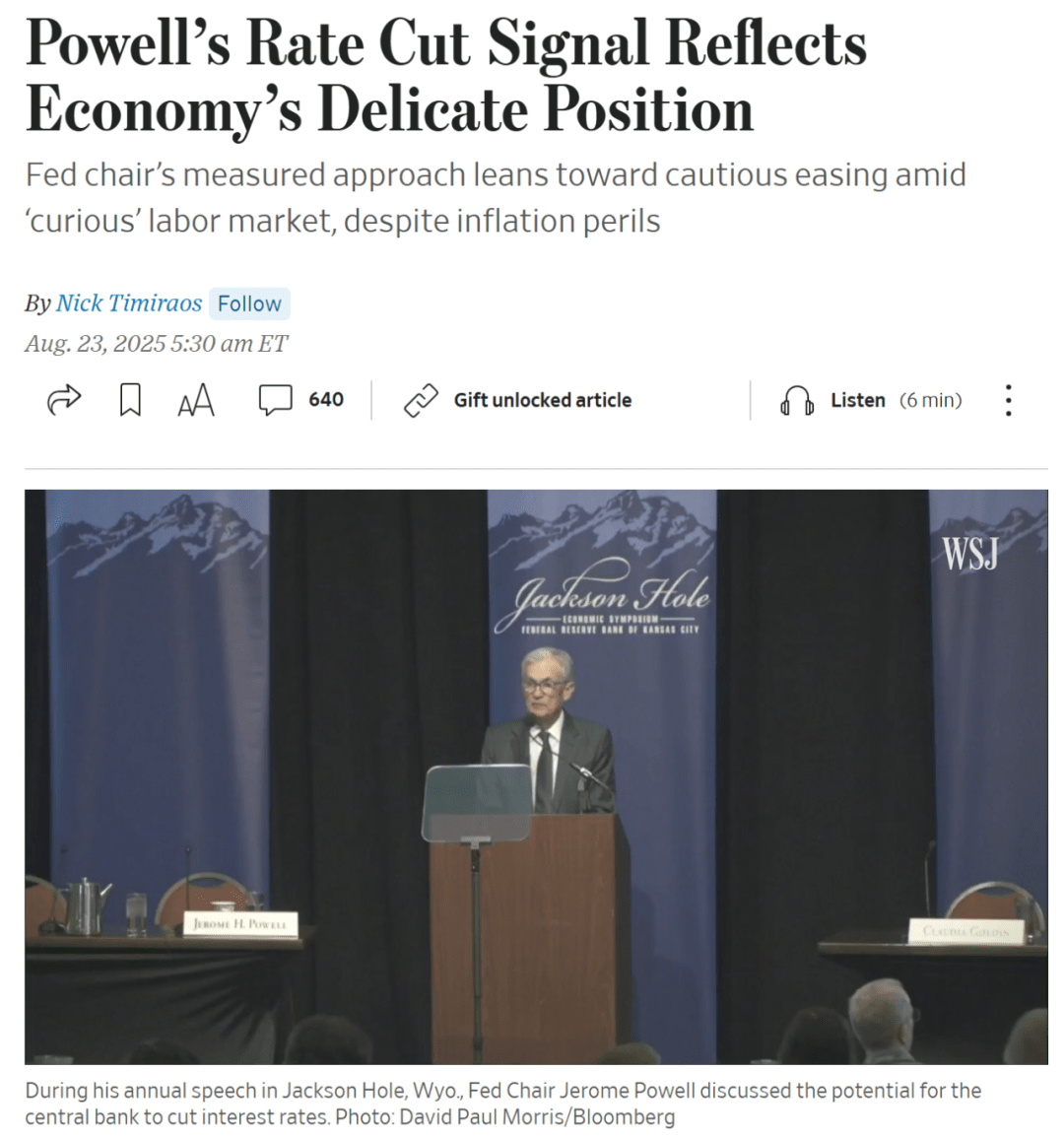
After the wild celebrations, the Federal Reserve suddenly signals a cooling, fearing the market moves too quickly.
'New Federal Reserve Correspondent' Nick Timiraos published an article today that includes both internal signals from officials and his own analysis.
First, the publication timing is one day after Powell 'hinted at a rate cut', giving him ample time to communicate with Federal Reserve officials. This article partly conveys signals that the Federal Reserve hopes to send to the public, and partly reflects Nick Timiraos' own understanding.
Second, the opening paragraph douses cold water on rate cut expectations: 'While Powell cautiously hinted at a possible rate cut next month, he sent a subtle signal to all those expecting significant policy easing: don’t expect interest rates to keep going down.' The implication is that a rate cut may happen in September, but it does not mark the beginning of a rate-cutting cycle.
Third, a comparison of Powell's two hints at rate cuts during Jackson Hole indicates a 'restrained' approach to rate cuts.
Last year: it was time for policy adjustment, and the direction was clear;
This year: the risk balance seems to be shifting, and policy adjustments may be needed.
Last year, the direction was clear, and a single speech set market expectations; this year, it is a vague 'shift in risk balance, which may require adjustment'. This indicates that the Federal Reserve itself has not fully settled, more like leaving room for 'flexibility'.
Fourth, there has not yet been a consensus within the Federal Reserve regarding a rate cut in September.
The article states that Powell's position seems to be his first public attempt this year to reach a consensus among colleagues with differing policy views.
The article does not present a balanced position, quoting the views of three opponents of a rate cut, two of whom are from within the Federal Reserve - Cleveland Fed President Mester and St. Louis Fed President Bullard - whose future speeches need close attention. If their stance does not change in the short term, a rate cut in September may be just a one-off 'insurance cut', rather than part of a cycle.
Next Friday, the Federal Reserve will face its first major challenge - the release of inflation data favored by the Federal Reserve - with the U.S. core PCE price index for July expected to grow by 2.9% year-on-year, marking the hottest reading since February. If economic activity picks up, businesses may be able to pass on more tariff costs to consumers. This could increase the risk that the upcoming 'August CPI and non-farm payrolls' may not support a rate cut in September.
